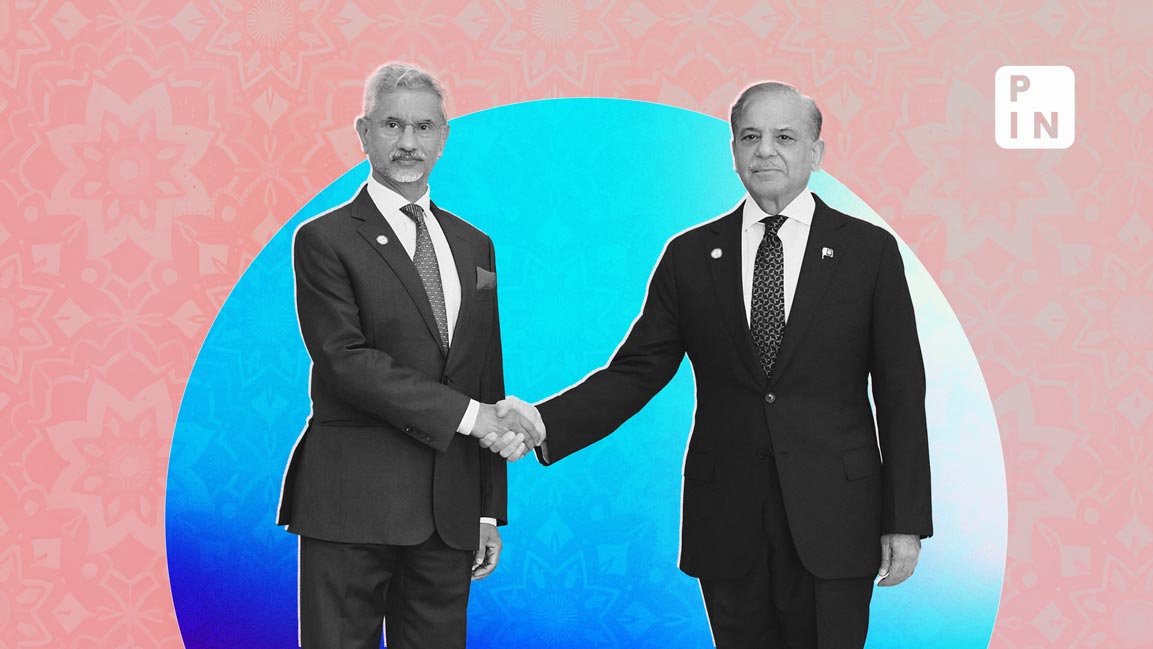- | 5:00 pm
So who’s winning the tug of war for Indian nurses, doctors?
Amid a global scramble for Indian healthcare talent in a post-covid era, India’s efforts to counter the brain drain with policy reforms spotlight an urgent need for balance

Last year, the number of nurses trained in India and working in the United Kingdom (UK) surpassed that of the Philippines for the first time, diversity data from Britain’s Nursing and Midwife Council show.
The shift came a couple of years after Manila had temporarily restricted the migration of healthcare workers following the devastating impact of the pandemic in that country.
The rapid spread and scale of devastation wrought by covid laid bare the vulnerabilities of healthcare systems in the West, particularly the acute shortage of human resources needed to effectively manage a crisis of such magnitude.
In response, Western nations have intensified efforts to bolster their healthcare workforce by stepping up hiring from countries like the Philippines, Nigeria, Zimbabwe, Jamaica, and India.
Against the backdrop of severe staff shortages and the unbridled proliferation of recruitment agencies, countries such as Germany, Canada, Australia and the UK have tied up directly with government-backed agencies in the state of Kerala, one of the largest exporters of nurses in the country, to streamline the recruitment and settlement of healthcare workers.
The number of foreign nurses placed in US hospitals increased by 300% since the start of the pandemic, AMN Healthcare, one of America’s largest international recruiters, reported.
Tracing the immigration route
India’s soft power has long rested on, apart from a few select domains, its doctors and nurses. The country has been one of the world’s largest sources for immigrant physicians and nurses.
Despite the pressing demand for healthcare professionals within the country, the post-covid era has seen a surge in the number of these professionals seeking opportunities abroad.
A World Health Organization-backed study in 2022 among nursing students in Kerala found more than half the students who joined a course intended to migrate overseas. The students viewed international migration as a step toward securing greater financial independence and leading an improved social and professional life.
By the time they had graduated, more than three-fourths reported their desire to migrate, with peer influence being cited as a significant motivator, the study that was conducted along with the Health Systems Research India Initiative Trust said.
For decades, nurses from the southern states would head to the northern states before relocating to the Gulf and, eventually, migrating to North America, Europe and Australia, the study said.
But the intense shortage of healthcare workforce is reshaping traditional migration patterns, bypassing earlier steps in a sign of urgent global demand for their skills.
The great Indian brain drain
“Hello dude. There is no place for you in this country. Apply for a passport now!”
About a decade ago, students at the Madras Medical College woke up to this poster pasted by their senior on the hostel noticeboard, Dr R.V. Ashokan, national president of the Indian Medical Association (IMA), said.
“Ten years on, the poster’s still there, and the problem has, in fact, worsened. There aren’t adequate jobs for all the brilliant doctors and nurses within the country. India needs to protect its talent,” he said.
On 9 February, Union health minister Mansukh Mandaviya told Parliament that the doctor-population ratio in the country stood at 1:834, better than the WHO standard of 1:1,000.
Citing National Medical Commission (NMC) data, Mandaviya said there are 1.3 million doctors registered with the state medical councils and NMC, apart from 3.4 million registered nursing personnel and 1.3 million allied healthcare professionals in the country.
India also boasts the highest number of medical colleges globally, with 631 institutions at the end of the 2023 academic session, according to NMC. This compares with 348 medical colleges in Brazil and 198 in the US, according to some estimates.
Despite these numbers, India still doesn’t have equitable distribution of healthcare workers across the country.
In rural areas, where over two-thirds of India’s 1.43 billion population resides, people frequently endure extended waits for hospital beds or specialist doctors, struggle to afford care in private hospitals, and are subjected to substandard treatment.
Thousands still travel long distances to reach a primary healthcare center.
“The numbers are a political smokescreen for the glaring job scarcity facing medical graduates,” said IMA’s Ashokan.
“For 20 years, government neglect has crippled healthcare, leading to a rise in ad hoc recruitments. Despite producing numerous doctors, their potential remains untapped due to job shortages, dismal salaries, poor conditions, violence, and overwhelming workloads,” he said.
Dr Shaju Mathen, a paediatrician working on a Kerala government-IMA initiative to catalog hospital vacancies, said: “There are always three groups of medical graduates without jobs or the means for postgraduate coaching. The uneven distribution of doctors also brings down their remuneration.”
Mathen recounted the challenges his own daughter faced in securing a job after completing her post-graduation before eventually relocating to London.
Ease of migration
“Importing doctors from poorer nations to ease staffing shortages is a quiet scandal by developed nations; as it means aid flowing from the poor to the rich nation,” said a senior health official seeking anonymity.
Several countries such as Saudi Arabia, the UAE, and Ireland have launched aggressive, multimillion-dollar hiring drives and streamlined accreditation processes to lure doctors and nurses, with some even waiving mandatory norms like a minimum of three years of experience and recruiting nurses fresh out of college.
These nations have developed a “parasitic reliance on India. They strategically underinvested in their nursing workforces and educational pathways, banking on the ability to hire staff from abroad when demand surges,” an official in the state health ministry said on condition of anonymity.
For a country like India, where many locally trained doctors work abroad, it’s crucial to understand why they leave and streamline migration processes, analysts said.
Dr Rajeev Jayadevan, a gastroenterologist and former president of IMA-Kochi, ventured overseas early in his career, working in the Netherlands, Northern Ireland, England, and the US. Now in his 60s, he has returned to his homeland.
Reflecting on his decision to relocate, he said, “After completing my post-graduation, I went abroad in pursuit of educational excellence and to enhance my knowledge and skills.”
This reflects a broader trend of Indian healthcare professionals seeking better opportunities abroad.
Creating greener pastures
A Migration Policy Institute report cites “the lack of investment in healthcare, delays in appointing senior medical professionals, bureaucratic interference, and not enough jobs,” also as key factors.
To address these gaps, there needs to be sustained investment in health infrastructure, professional colleges, and technical education, the IMA said in its manifesto released ahead of the Indian general election.
The National Commission for Allied and Healthcare Professions Act, 2021, aims to uphold and regulate the standards of education and service for healthcare workers.
The Ministry of Skill Development and Entrepreneurship has also introduced measures to promote overseas employment of skilled Indian workers through bilateral agreements, ensuring these positions are not for permanent immigration.
Consequently, India has signed 11 memorandums of understanding with Australia, Belarus, China, Denmark, France, Germany, Japan, Qatar, Switzerland, UAE, and the UK.
Researchers from the International Institute of Migration and Development in Kerala have suggested a circular migration policy, where countries could agree to share critical human health resources, while assisting in job placement, continuing education, and sharing knowledge and expertise on a global scale.
“At the G20 summit last year, I floated the idea that India can enter into an MoU with 29 countries. This will help Indian doctors get the opportunity for work, education, training, and research,” said Dr Abul Haassan, president of IMA in Tamil Nadu.
Failure to address underfunding and to capitalize on the demand for Indian healthcare workers risks losing these professionals to foreign countries without receiving equitable benefits or compensation.













